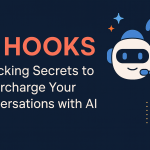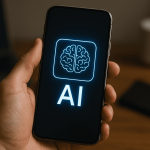Artificial intelligence has revolutionized the way we approach creativity, unlocking new dimensions of innovation previously unimaginable. At the intersection of human ingenuity and machine intelligence lie AI-generators, powerful tools that help creators overcome creative blocks, spark fresh ideas, and explore hidden artistic potential. From writing and design to music and visual art, AI-generators offer an endless supply of creative stimuli, effectively hacking the creative process and redefining the boundaries of artistic expression.
Understanding how AI-generators function is key to harnessing their hidden capabilities. AI models like GPT, Midjourney, Stable Diffusion, and DALL·E operate by identifying complex patterns within massive datasets. By synthesizing these patterns, they produce novel combinations and ideas that often escape human creativity. Rather than replacing human creativity, AI-generators amplify it, presenting creators with a limitless array of imaginative prompts, inspirations, and starting points that help break traditional thought patterns and drive innovation.
One hidden strength of AI-generators lies in their ability to swiftly generate a wide variety of creative options. Humans, bound by cognitive biases and habitual thought patterns, often struggle to diversify their creative outputs. AI-generators, however, face no such limitations, effortlessly producing dozens, even hundreds, of creative alternatives in seconds. This abundance allows creators to rapidly explore unconventional directions, experiment freely, and refine ideas more efficiently. By employing AI in the initial ideation phase, creators bypass common creative pitfalls, leading to richer, more original outcomes.
A particularly powerful technique is leveraging AI for collaborative creativity. Rather than passively consuming AI-generated content, creatives can adopt a dynamic, interactive approach. By iteratively prompting AI with increasingly refined questions or specific contexts, creators engage in a collaborative “creative dance,” gradually steering the output toward novel and surprising directions. This iterative process allows creators to fine-tune ideas continuously, exploring nuances and possibilities that might otherwise remain undiscovered.
Another crucial but often overlooked capability is the AI’s power to inspire through randomization and serendipity. Creative breakthroughs frequently emerge from unexpected connections or happy accidents. AI-generators excel at fostering serendipity by producing unexpected, seemingly random associations that challenge creators’ preconceptions. By deliberately introducing randomness into creative prompts—such as asking the AI to blend unrelated concepts or styles—creators access entirely new realms of thought, enriching their artistic vision and innovation.
Furthermore, AI-generators enable rapid prototyping and experimentation, particularly valuable in fields like graphic design, product development, and digital media. Creators can rapidly visualize concepts, assess their viability, and refine them on the fly without significant resource investment. For instance, designers can use AI tools to swiftly generate dozens of logo concepts, marketers can instantly test diverse slogans, and authors can experiment with numerous plot twists. This agility significantly reduces the time from ideation to realization, enabling creators to focus more on refinement and iteration rather than initial concept generation.
Additionally, the strategic use of constraints within AI-generators can lead to extraordinary creative outcomes. Constraints typically seen as limitations—such as style, theme, or character limits—can paradoxically enhance creativity when coupled with AI. Imposing structured constraints on AI-generated outputs forces creators to think deeply and imaginatively within defined boundaries, spurring innovation and unexpected solutions. By combining AI’s generative power with thoughtfully selected constraints, creators cultivate a disciplined yet highly imaginative creative practice.
Another secret to unlocking AI’s creative potential is learning how to effectively blend multiple AI tools. For instance, a creator might generate text prompts using GPT, feed these prompts into visual tools like Midjourney or Stable Diffusion to generate imagery, and subsequently use an audio-generating AI such as Meta’s AudioCraft to produce complementary soundscapes. By integrating multiple AI platforms seamlessly, creators open doors to multidimensional creative experiences, producing deeply immersive and uniquely original projects.
Importantly, creators should remain mindful of ethical considerations when employing AI-generators. Questions surrounding originality, copyright, and authenticity continually arise in AI-driven creativity. Ethical use involves transparently attributing AI assistance where appropriate and considering the broader implications of AI-generated content. Conscious engagement with ethical guidelines ensures creators responsibly and sustainably leverage AI’s immense creative potential.
Conclusion
AI-generators have forever altered the landscape of creativity, offering unprecedented opportunities to unlock hidden artistic potential. By mastering AI-driven strategies such as iterative collaboration, embracing randomness and serendipity, rapid prototyping, creative constraints, and tool integration, creators can elevate their creative outputs to exceptional heights. Ultimately, AI-generators serve not as replacements for human creativity, but as powerful catalysts that amplify our imaginative capacities, enabling us to redefine what it means to be truly creative in the digital age.



so damn fun! wtf ismagic👍
Ngl, you can barely tell it apart from actual magic🤯
ai creativity? pfft 🙄 just fancy copy-paste